Black Kutsinta represents a sophisticated evolution of a beloved Filipino delicacy. While the traditional orange-brown kutsinta holds its own cherished place in Filipino cuisine, this contemporary version elevates the classic rice cake to new heights.
By incorporating blackstrap molasses, we achieve not only a striking natural black color but also introduce complex flavor notes – warm, slightly bitter, and pleasantly smoky. The addition of dulce de leche and toasted coconut creates a harmonious blend of textures and tastes that transforms this humble snack into a refined dessert experience.
Whether served as an afternoon merienda or presented as a dessert, Black Kutsinta demonstrates how Filipino cuisine continues to evolve while honoring its roots.
Jump to:
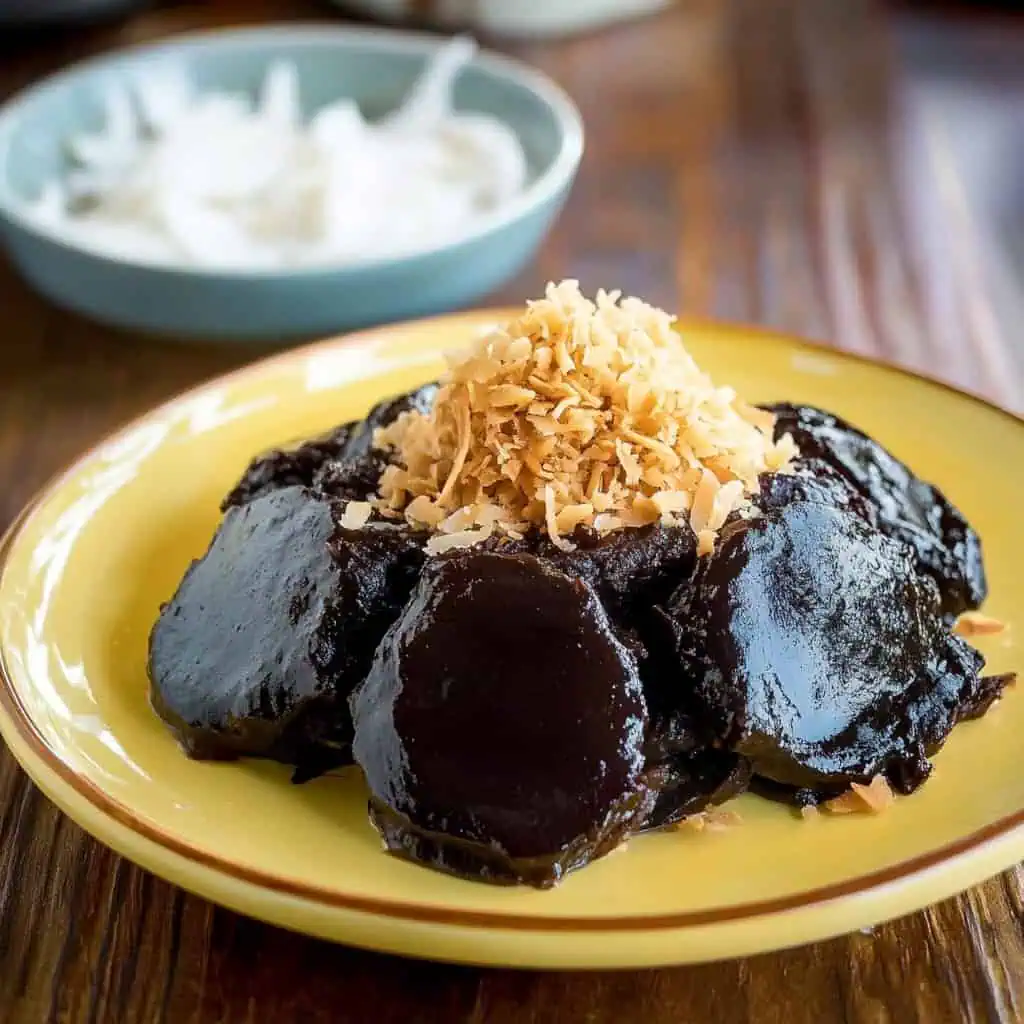
Why You'll Love This Recipe
- Rich, complex flavors from blackstrap molasses
- Perfect balance of sweet and slightly bitter notes
- Multiple textures: sticky-chewy cake, creamy topping, and crunchy coconut
- No artificial coloring needed
- Made with easily accessible ingredients
- Can be prepared in advance
- Modern twist on a classic Filipino favorite
Ingredients
The ingredients in Black Kutsinta create a perfect balance of flavors and textures. Tapioca starch and all-purpose flour form the base that gives the classic chewy texture Filipinos love. Blackstrap molasses is the star ingredient, providing not just the striking black color naturally, but also complex, slightly bitter notes that elevate this dessert beyond the traditional version.
Lye water is essential for creating that signature bouncy texture that makes kutsinta instantly recognizable. The dulce de leche topping adds creamy sweetness that complements the slightly bitter cake, while toasted coconut brings a crucial textural contrast with its delightful crunch.
Together, these ingredients transform a humble snack into a sophisticated dessert experience that honors Filipino culinary tradition while embracing modern innovation.
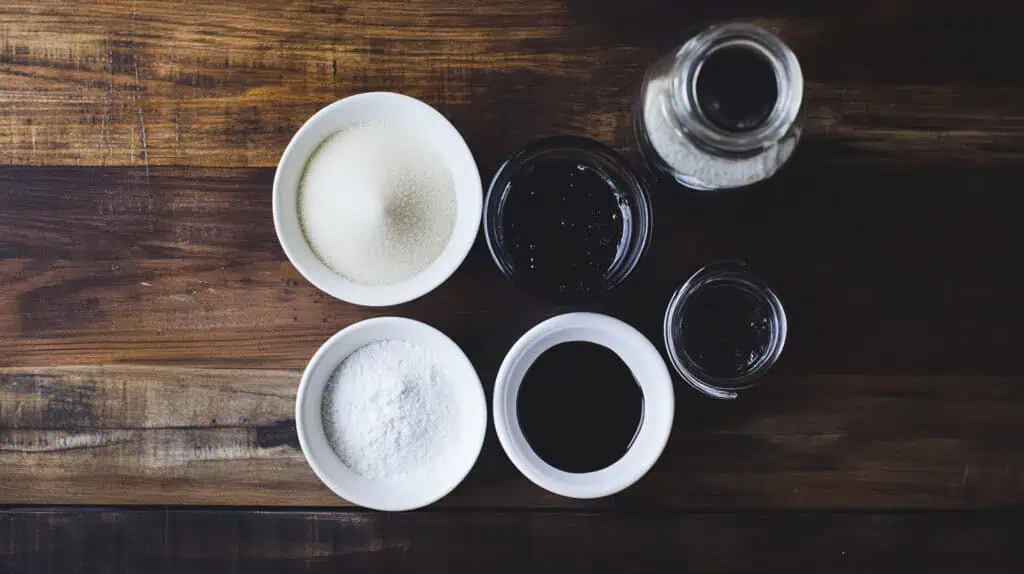
- 1 cup tapioca starch
- 1 cup all-purpose flour
- ¾ cup dark brown sugar
- 2 tablespoons blackstrap molasses
- 2 teaspoons lye water
- 2 cups water
- Oil spray for greasing molds
For the Dulce de Leche Topping:
- 400g can condensed milk
For the Toasted Coconut Topping:
- 1½ cups desiccated coconut
Equipment
- Steamer – Essential for gently cooking the kutsinta with indirect heat, ensuring soft and chewy texture
- 24 kutsinta/puto molds – Traditional small cups that give the rice cakes their classic shape
- Large mixing bowl – For combining all ingredients uniformly
- Measuring cups and spoons – Ensures recipe accuracy for best results
- Non-stick pan – Used specifically for toasting the coconut evenly without burning
- Deep pot – Needed for the water bath method to safely make dulce de leche
- Clean kitchen cloth – Prevents water condensation from dripping onto the kutsinta during steaming
- Whisk or wooden spoon – For thorough mixing to achieve a smooth, lump-free batter
- Oil spray bottle – Makes greasing the molds quick and easy for clean release
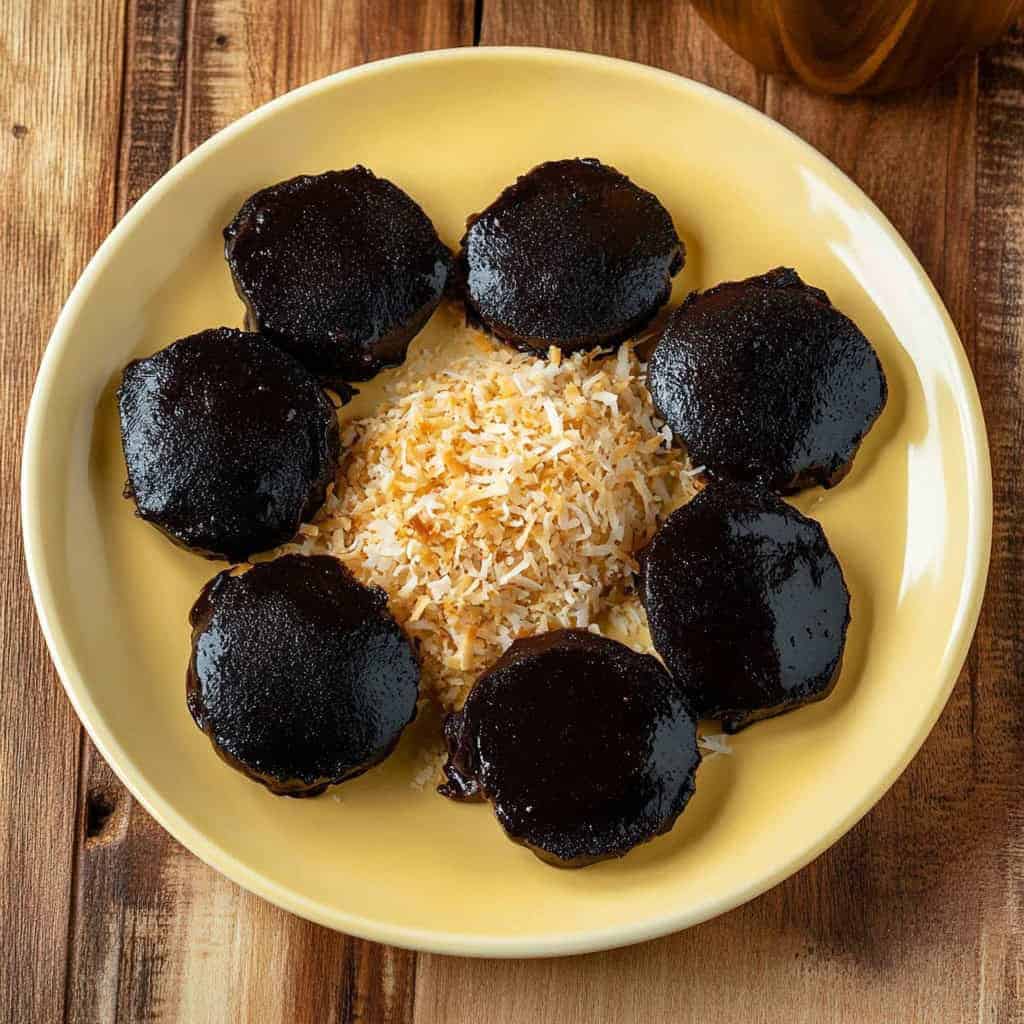
How To Make
- Prepare your workspace by greasing 24 kutsinta molds with oil spray. Set up your steamer with water and place a clean kitchen cloth under the steamer lid to catch water droplets. Bring water to a simmer.
- Start the dulce de leche first as it takes longest. Place unopened can of condensed milk in a deep pot and cover completely with water (at least 2 inches above the can). Bring to a boil, reduce to simmer, and cook for 1 hour. Maintain water level throughout cooking. Once done, remove carefully and let cool completely before opening.
- Make the kutsinta batter while dulce de leche cooks. In a large mixing bowl, combine tapioca starch and all-purpose flour. Add dark brown sugar and mix well. Pour in blackstrap molasses and lye water. Gradually add water while whisking to prevent lumps. Mix until batter is smooth. The batter will look brown but will darken when cooked.
- Cook the kutsinta by pouring batter into greased molds, filling each about 80% full. Place in prepared steamer and steam at medium heat for 15 minutes. Remove from steamer and let cool completely before removing from molds.
- Toast the coconut while kutsinta cools. Place desiccated coconut in a non-stick pan over medium-low heat. Toast while stirring constantly until golden brown, about 5-7 minutes. Remove from heat immediately to prevent burning and let cool.
- Assemble the kutsinta once everything has cooled. Carefully remove kutsinta from molds. Top each piece with a spoonful of cooled dulce de leche, then sprinkle with toasted coconut. Serve immediately or store in an airtight container if serving later.
Note: The kutsinta will be very soft when hot but will firm up as it cools, so be patient before unmolding. If making ahead, store kutsinta, dulce de leche, and toasted coconut separately and assemble just before serving.

Tips from Lola's Kitchen
- Use true blackstrap molasses for authentic taste and the natural black color – regular molasses won't achieve the same result
- Maintain consistent steaming temperature for even cooking throughout
- Let the mixer rest for 5 minutes before steaming to allow air bubbles to rise and escape
- Cool completely before unmolding to maintain shape and prevent tearing
- Toast coconut in small batches for better control and more even browning
- Prepare dulce de leche a day ahead to save time on cooking day
- Cover leftover dulce de leche with plastic wrap directly touching the surface to prevent skin formation
Substitutions
- Tapioca starch: Rice flour can be used as an alternative, though texture will be slightly different
- Blackstrap molasses: Cannot be substituted for authentic taste and color – this is the key ingredient
- Lye water: Mix 1½ teaspoons baking soda with 1 tablespoon water as a substitute, though texture may differ slightly
- Dark brown sugar: Muscovado sugar works perfectly as an alternative
- Desiccated coconut: Freshly grated coconut can be used but must be toasted until dry first
- Dulce de leche: In a pinch, can substitute with caramel sauce, though the flavor profile will be different
Troubleshooting
- Kutsinta is too soft: Steam for additional 2-3 minutes or check if your batter ratio was correct
- Kutsinta sticks to molds: Ensure molds are well-greased and cool completely before attempting to remove
- Uneven color: Mix batter more thoroughly and maintain consistent steaming temperature
- Dulce de leche too runny: Likely undercooked; return to simmering water for additional 15-30 minutes
- Burnt taste in coconut: Toast on lower heat and stir constantly, removing from heat as soon as golden color appears
Storage & Reheating
- Room temperature: Keep in an airtight container for up to 24 hours
- Refrigerator: Store up to 3 days, but texture may become firmer
- Freezing: Not recommended as it significantly changes the texture
- Reheating: Steam for 2-3 minutes or microwave for 15-20 seconds to soften
- Best practice: Store components separately and assemble just before serving for optimal texture
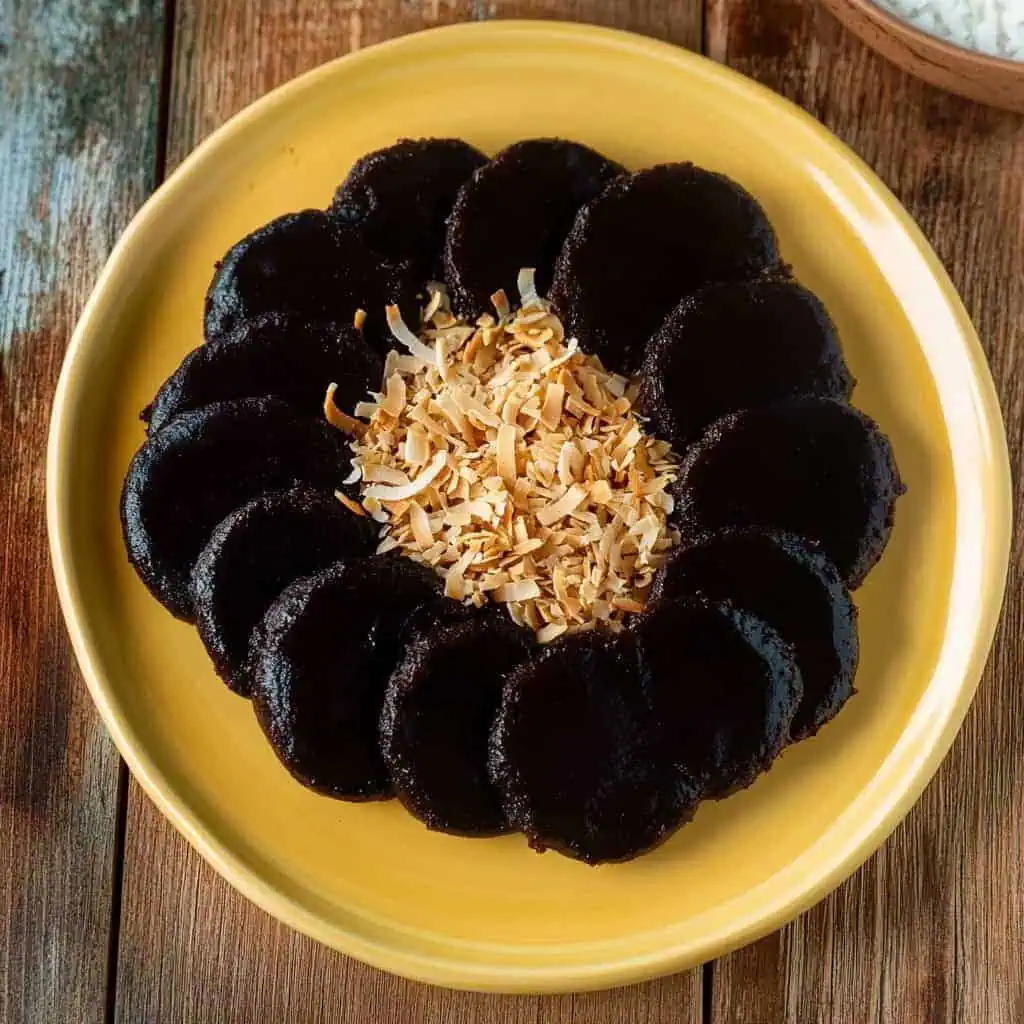
FAQ
Why use blackstrap molasses instead of food coloring?
Blackstrap molasses provides both natural color and distinctive flavor that food coloring cannot replicate. It also adds nutritional benefits like iron and minerals.
Can I make this in advance for a party?
Yes, you can make the components up to 24 hours ahead. Store at room temperature and add toppings just before serving for best presentation.
Why isn't my kutsinta as black as in the photos?
The darkness depends on your molasses brand and concentration. Focus more on taste than achieving the darkest color possible.
Is lye water safe to use?
Yes, when used in small amounts as directed. It's a traditional ingredient in many Asian desserts that gives kutsinta its distinctive texture.
How do I prevent my kutsinta from becoming soggy?
Use a cloth under the steamer lid to catch condensation, allow to cool completely before adding toppings, and assemble shortly before serving.
Can I reduce the sugar for a less sweet version?
You can reduce the brown sugar by up to ¼ cup, but this may affect texture slightly. The molasses already provides some bitterness to balance the sweetness.
What's the best way to serve black kutsinta at a gathering?
For traditional service, arrange on banana leaves on a platter. For modern presentation, serve in individual cups layered with the toppings for an elegant dessert.
How can I tell when kutsinta is fully cooked?
The surface should look set and slightly firm to touch. Insert a toothpick – it should come out clean with a few sticky particles.
Related
Looking for other recipes like this? Try these:
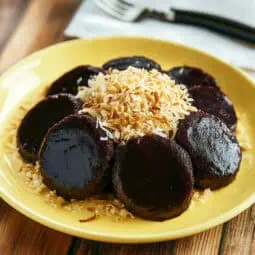
Black Kutsinta (Molasses Rice Cake)
Equipment
- Steamer (Kalan na Pang-steam) for cooking the kutsinta
- 24 kutsinta/puto molds traditional small cups for shaping
- Large mixing bowl (Malaking mangkok) for combining ingredients
- Measuring cups and spoons (Panukat) for accurate measurements
- Non-stick pan (kawali) for toasting coconut
- Deep pot (Malalim na Kaldero) for making dulce de leche
- Clean kitchen cloth (Malinis na Tela) to prevent water droplets during steaming
- Whisk or wooden spoon (Sandok na Kahoy) for mixing batter
- Oil spray bottle (Pang-spray) for greasing molds
Ingredients
For the Black Kutsinta:
- 1 cup tapioca starch galapong
- 1 cup all-purpose flour regular na harina
- ¾ cup dark brown sugar
- 2 tablespoon blackstrap molasses
- 2 teaspoon lye water
- 2 cups water tubig
- Oil spray for greasing molds pangspray na mantika
For the Dulce de Leche Topping:
- 400 g can condensed milk kondensadang gatas
For the Toasted Coconut Topping:
- 1½ cups desiccated coconut niyog
Instructions
- First, prepare your workspace by greasing 24 kutsinta molds with oil spray and setting up your steamer with water. Place a clean kitchen cloth under the steamer lid to catch any water droplets, then bring the water to a simmer.
- Start the dulce de leche since it takes the longest. Place an unopened can of condensed milk in a deep pot and cover it completely with water, making sure there's at least 2 inches of water above the can. Bring it to a boil, then reduce to a simmer and cook for 1 hour. Remember to maintain the water level. Once done, remove carefully and let it cool completely before opening.
- While the dulce de leche cooks, make your kutsinta batter. In a large mixing bowl, combine 1 cup tapioca starch and 1 cup all-purpose flour. Add ¾ cup dark brown sugar and mix well. Pour in 2 tablespoons blackstrap molasses and 2 teaspoons lye water. Gradually add 2 cups water while whisking to prevent lumps. Keep mixing until your batter is smooth. Don't worry that it looks brown – it will darken when cooked.
- Pour the batter into your greased molds, filling each about 80% full. Place them in your prepared steamer and steam at medium heat for 15 minutes. Remove from the steamer and let them cool completely before removing from the molds.
- While the kutsinta cools, make the coconut topping. Put 1½ cups desiccated coconut in a non-stick pan over medium-low heat. Toast it while stirring constantly until it turns golden brown, about 5-7 minutes. Take it off the heat right away to prevent burning and let it cool.
- Once everything has cooled, carefully remove the kutsinta from their molds. Top each piece with a spoonful of the cooled dulce de leche, then sprinkle with toasted coconut. Serve right away or store in an airtight container if serving later.
- Remember: The kutsinta will be very soft when hot but will firm up as it cools, so be patient before unmolding. If you're making this ahead, store the kutsinta, dulce de leche, and toasted coconut separately and assemble just before serving.
Tips from Lola's Kitchen
- Always use blackstrap molasses for authentic taste and natural black color
- Keep the steaming temperature consistent for even cooking
- Don't skip the cloth under the lid - it prevents water droplets from making the kutsinta soggy
- Let kutsinta cool completely before unmolding to maintain shape
- Toast coconut in small batches for better control
- Make dulce de leche a day ahead to save time
Nutrition
The Story Behind Black Kutsinta
The story of Black Kutsinta begins with its beloved predecessor, the traditional Filipino kutsinta - a cherished rice cake that has graced Filipino merienda tables for generations. Known for its distinctive orange-brown hue and chewy texture, traditional kutsinta has long been a staple in local markets, neighborhood bakeries, and family gatherings across the Philippines.
In early 2017, an innovative twist emerged in the bustling streets of Metro Manila when creative home bakers began experimenting with blackstrap molasses. This reimagining of kutsinta wasn't just about changing its color; it was about elevating its flavor profile. Unlike versions that simply used food coloring to achieve the black shade, this authentic variation harnessed the rich, complex notes of blackstrap molasses to create something entirely new.
By mid-2018, Black Kutsinta had captured the attention of Filipino food enthusiasts on Instagram and Facebook, where its striking appearance and sophisticated taste made it a social media sensation. Food bloggers and home cooks shared their experiences, noting how the molasses brought warm, slightly bitter, and subtly smoky notes to the traditionally sweet rice cake. The addition of dulce de leche topping and toasted coconut - departures from the traditional grated fresh coconut - further distinguished this modern interpretation.
What makes Black Kutsinta particularly special is its connection to Filipino culinary innovation. While staying true to the core techniques of traditional kutsinta-making, this version showcases how Filipino desserts continue to evolve. The use of blackstrap molasses not only provides natural coloring but also adds nutritional value, as it's rich in iron and minerals - a fact that appeals to health-conscious food lovers.
Today, Black Kutsinta represents the perfect marriage of tradition and innovation in Filipino cuisine. Found in trendy cafes, upscale Filipino restaurants, and modern interpretations of karinderia offerings, it has earned its place as both a nostalgic comfort food and a contemporary culinary creation. Its popularity among both locals and international food enthusiasts demonstrates how Filipino snacks can be reimagined while maintaining their cultural integrity.
Whether enjoyed as an afternoon merienda with hot coffee, served at family celebrations, or presented as a sophisticated dessert at modern Filipino restaurants, Black Kutsinta continues to captivate food lovers with its unique taste, texture, and visual appeal. It stands as a testament to the endless possibilities when traditional Filipino recipes meet contemporary culinary creativity.
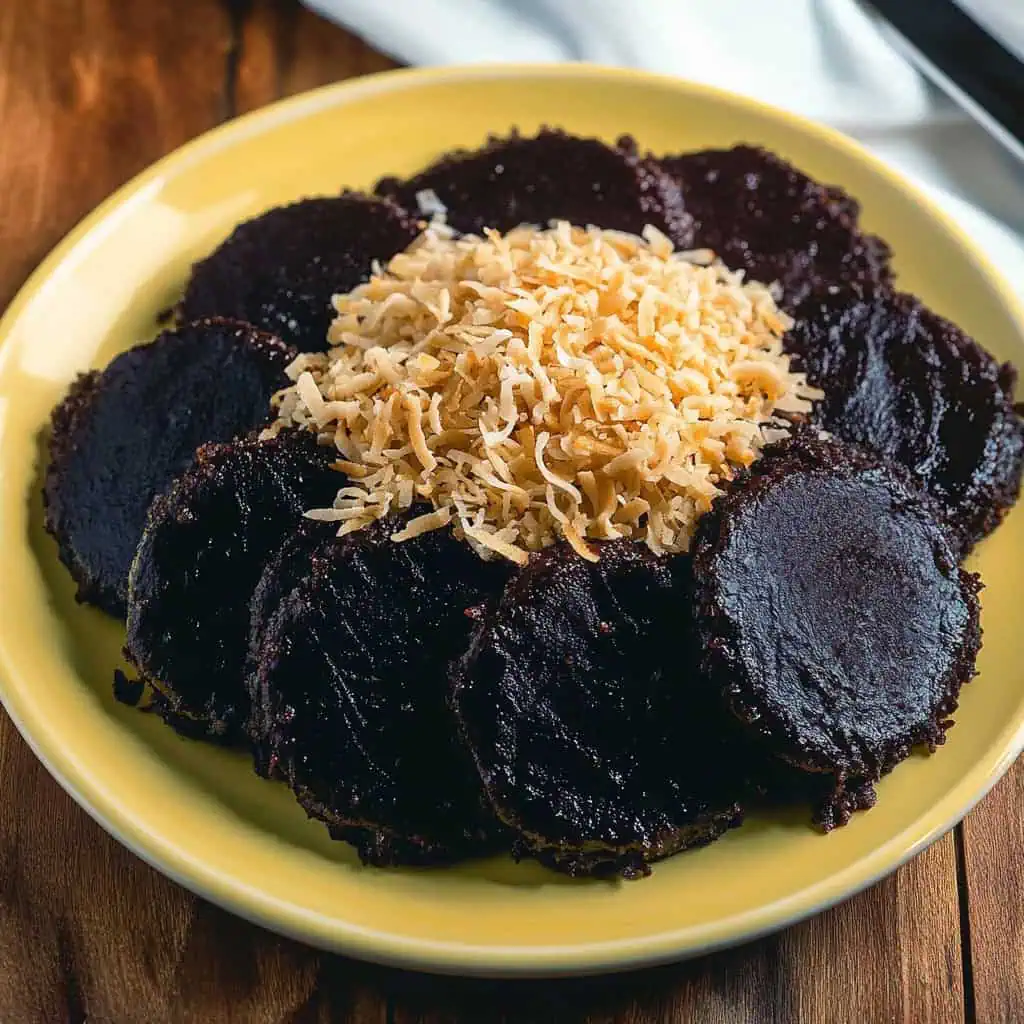






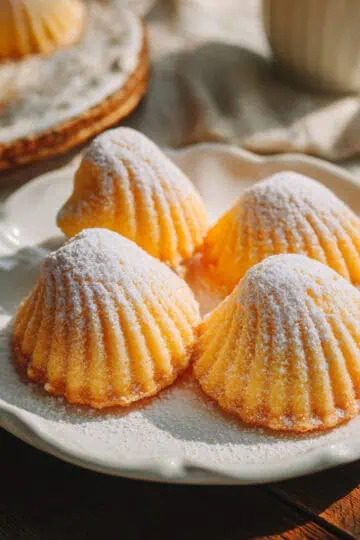
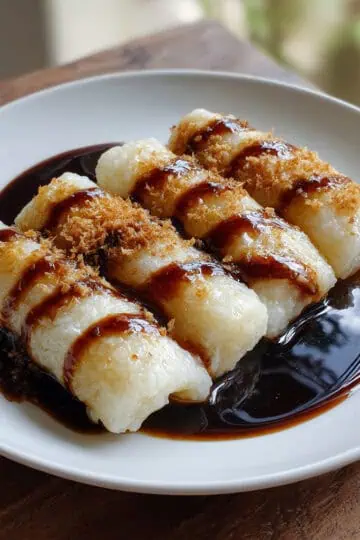
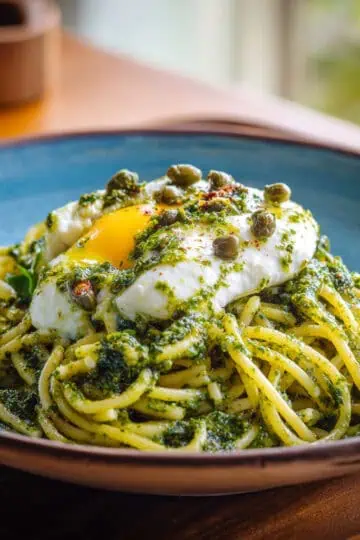
Comments
No Comments